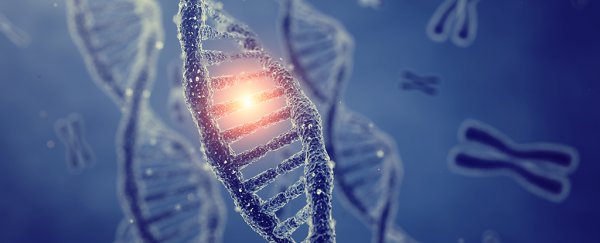A new kind of epigenetic edit recently discovered in the brain cells of mammals has been found to occur when the individual has been stressed, hinting at underlying neurological functions.
Researchers still aren't entirely sure how this particular type of epigenetic modification works, but its elevated presence in mice that suffer through rough times suggests it could play a central role in a number of neuropsychiatric problems.
Broadly speaking, epigenetics describes the variety of changes that alter how a genetic code is read.
One common type of epigenetic edit involves the addition or removal of a methyl group onto a base, made up of a carbon holding onto three hydrogens.
Added to a base making up a nucleic acid sequence, this group can effectively render a gene unreadable. It's a convenient way of switching off a gene without mutating its code.
In most cases, especially among mammals, it's the base cytosine (C) that's methylated.
Methylation of another base, adenosine (A), was mostly found in simple organisms such as bacteria.
That all changed in recent years with the discovery of 6-methyl A in the embryos of mice.
While this kind of methylation seems to play an important role in regulating the development of brain cells, it's still early days for investigating the biochemical differences surrounding the two different approaches to epigenetics.
In an effort to better understand the adenosine-based style of genetic tweaking, an international team of scientists led by researchers from the Emory University School of Medicine in the US studied the brains of mice put under stressful conditions.
Environmental factors have long been known to play a significant role in causing cells to methylate their DNA. This often means that events happening during development can have life-long genetic consequences.
These 'switches' can even be inherited, meaning a time of stress for one organism can echo down the generations.
To give the young mice some grief without causing too much anguish, the researchers forced them to go for a swim and picked them up by the tail – the rodent equivalent of a hard day at the office.
Later, they analysed the pre-frontal cortex section of their brain, finding the levels of methylated adenosine had jumped four-fold compared with the less-stressed mice.
"We found that 6-methyl A is dynamic, which could suggest a functional role," says researcher Peng Jin. "That said, the enzymes that recognise, add and erase this type of DNA methylation are still mysterious."
Jin and his colleagues also found the modified base appeared in areas between genes more than in genes that coded for proteins.
In other words, something was removing the methyl groups from the adenosine inside particular genes that were needed to deal with their stress.
Many of the genes that remained methylated appeared to match those that have been associated with neuropsychiatric disorders such as those on the autism and schizophrenia spectrum.
More research is needed to connect the dots between stress, adenosine methylation, and these kinds of neurological conditions.
But detailing the subtle differences in how genes deal with changes in the environment on the fly is the first step for us to find out where it might go wrong.
This research was published in Nature Communications.
